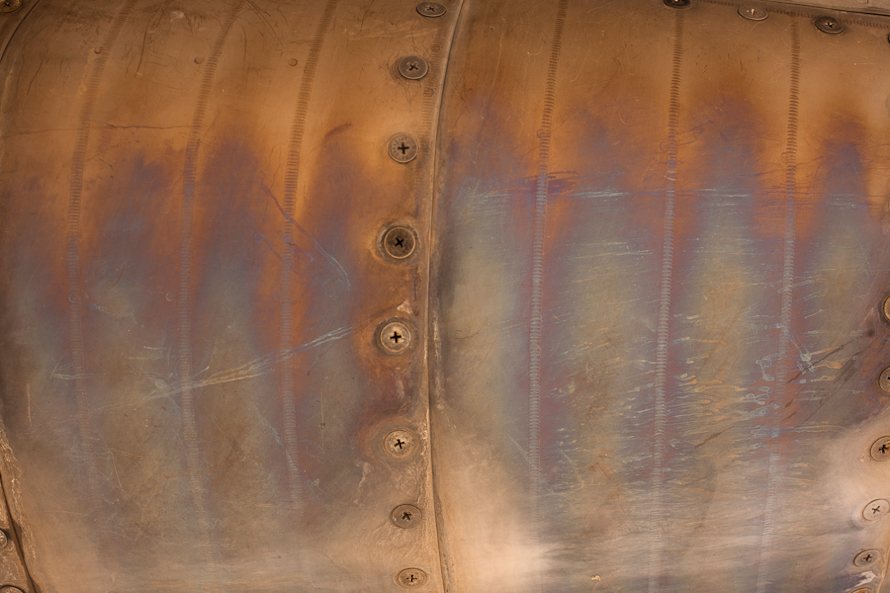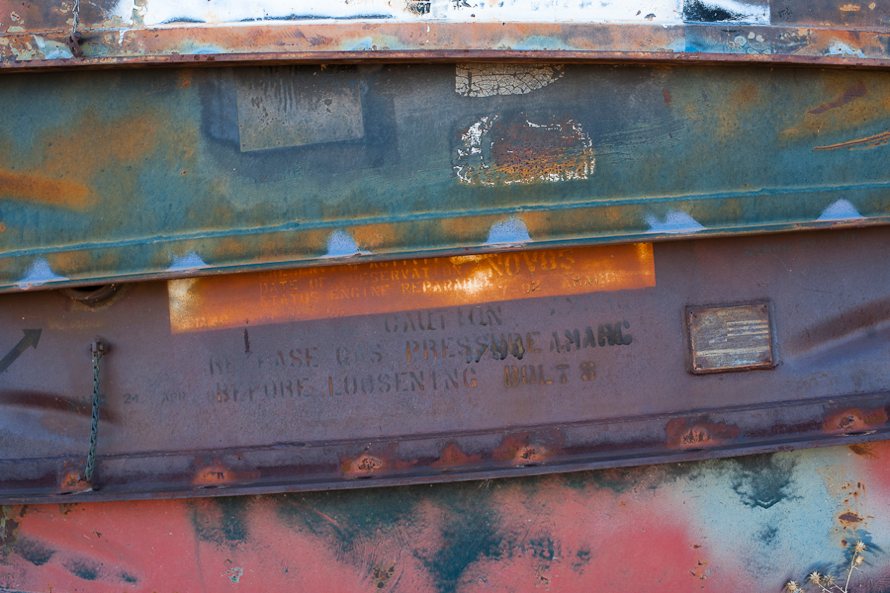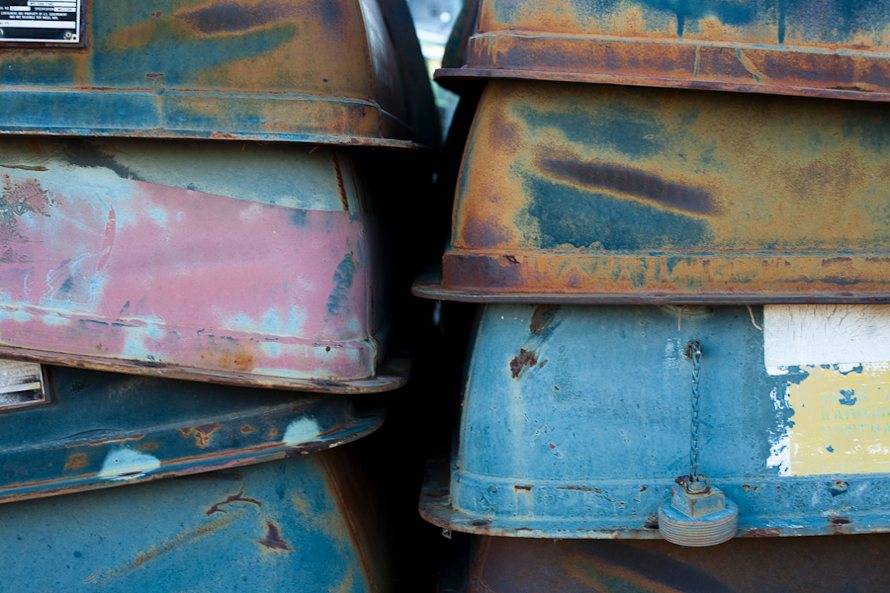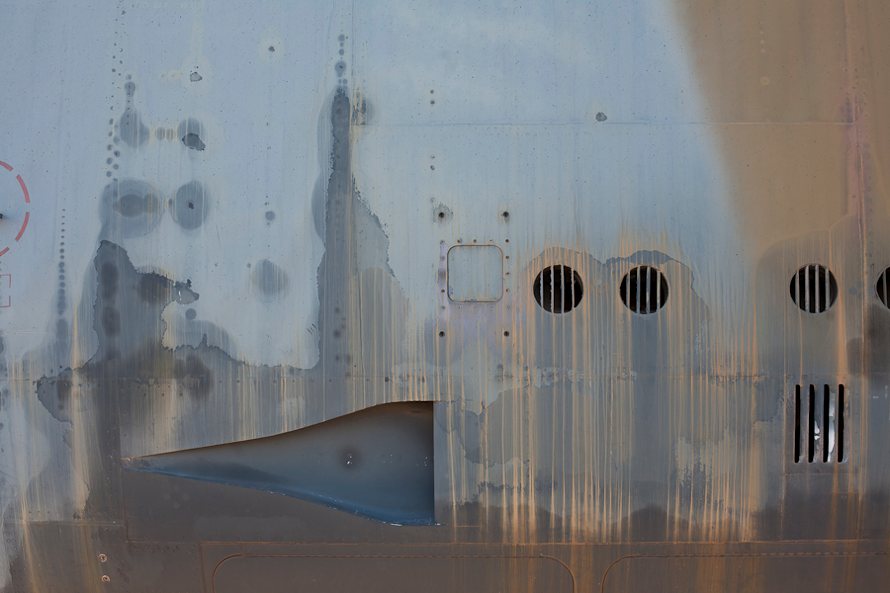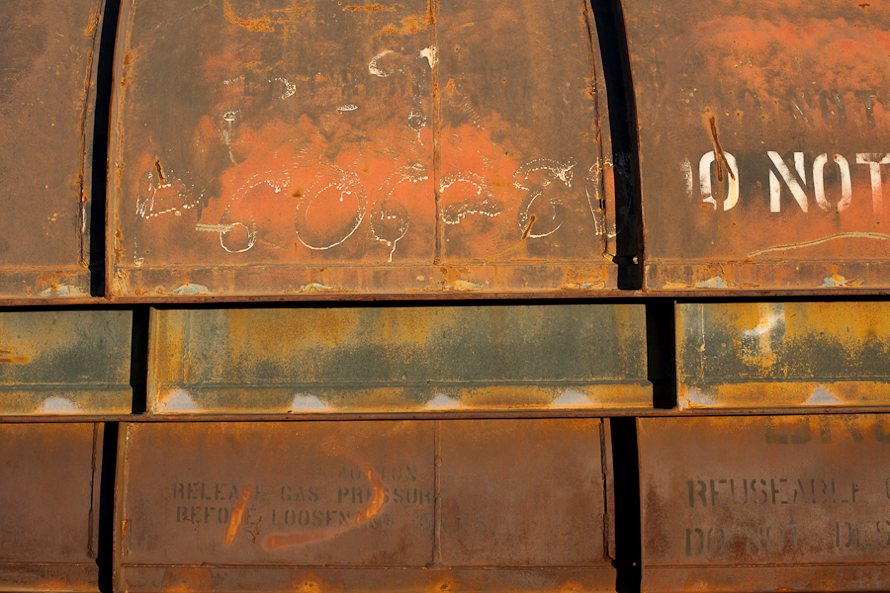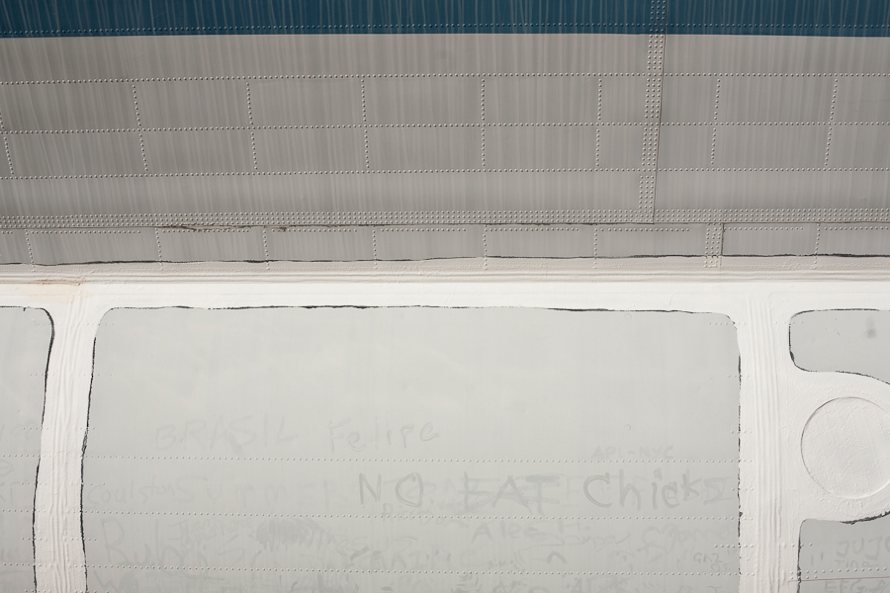Explain how this series came about. Where are these planes found?
Marshall Sokoloff:The planes are at the “Aircraft Boneyard” in Tucson, Arizona. I’d always wanted to visit, but overall it was quite disappointing because almost all of the planes are secured and inaccessible to the public
I was just about to leave Tucson when I decided to take a quick peek at the Pima Air and Space Museum, just for the hell of it. What I found was a series of hangar-like buildings housing a number of beautifully restored planes. As attractive as they were, this simply wasn’t the type of stuff that interests me.
Before I left, I noticed that the museum also had a huge backyard filled with unrestored aircraft. They were mostly unattended, so I could really explore, as light and space allowed. Space and light were exceptionally tight, which limited me to these images.
TMN:Did the planes’ history influence your approach?
MS:I missed the Vietnam draft by just a few years, but I was old enough to have that war as part of my background growing up. There was always a question of the legitimacy of the U.S. government’s actions, and a real feeling that so much of the story was being hidden from us. The level of protesting by people five years older than me, and the spectacle of Americans revolting against their own government, shaped my own feeling about the role of government and our role in conflicts all over the world.
My father was a WWII vet, and the situation and conditions for that war were so much different. There was little or no protest; Americans felt that they were solving a world crisis.
Crawling around in the belly of a B-52 (a primary bomber of Vietnam), I felt stunned and overwhelmed when I stopped to consider how many people had died underneath this beast. It takes my breath away even now.
TMN:Any new photographers you find inspiring?
MS:I hope I don’t sound arrogant, but I go out of my way to avoid looking at other people’s work. This is far from a superiority complex; in fact, I am insecure enough to feel that so many shooters are better than me. The issue for me is that if someone else has already shot something that is similar, it ruins the moment, and often ruins the shot, or how I feel about the shot. I know there are many valid arguments against this type of thinking, but it’s how I feel the most comfortable working and continuing to feel original.
However, there is one photographer I adore: Gregory Crewdson.
TMN:Your work frequently deals in the aesthetics of corrosion, decay, layers. Are you ever drawn to shiny new things?
MS:Nope, nothing shiny or new. I’m most drawn to things that have fallen to decay or age within my lifetime. Perhaps it is a reference to my own decay, or the dreams of my generation.
TMN:Coke or Pepsi?
MS:San Pellegrino Carbonated Water.
TMN:What are you working on now?
MS:This interview. Snicker. I’m currently trying to mold three years of shooting into multiple series, and find people/groups that are interested in the presentation. Later in the spring I will return to the California Central Valley for a spell, and then to Eastern Europe once it thaws out.


